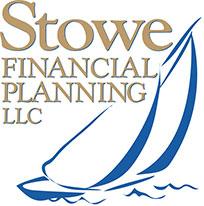
The 60/40 Guys Part 2
In the last piece, I described the origins and usefulness of a diversified retirement portfolio, and particularly the 60/40 stock/bond portfolio. The issue then becomes one of managing risk, and even of having a common definition of risk.
Let’s cut to the chase. When we talk about risk, we are talking about outliving our money. There are different ways to get there. Poor investment practices are one way. Other effective ways to run out of money are to retire too early, save too little, live too long or spend too much. Each of these have a larger effect on your plan than any ill-considered investment practice with the exception of market timing. Also, failing to properly plan for all of life’s ups and downs, such as helping out the kids, sudden illness or accident can add up to an unhappy ending.
We use statistical modeling to gauge our chances of outliving our money, and we measure the result as a percentage of success. Everyone has seen the speedometer graphic that we use. For a short refresher, go to your portal and click the Planning tab. The software we use takes the information we input about your retirement and other goals and runs one thousand trials using a randomized portfolio return. The number of those trials that are successful are expressed as a percentage of the total number of trials. A 90% outcome means 900 trials end with money in the bank, while 100 trials end with being broke.
This might be a good time to poke a little fun at the honor roll students out there. The goal is not 99% success. If all trials pass, you will without a doubt leave money behind, and I mean lots of it. To frame this right, there is about a 30% chance that one person of a married couple will live as long as we project that you will live. With the expectation of a 99% outcome, there is 99% confidence that your money will be around when there is a 30% chance you will be there to enjoy it. If legacy is your highest priority, this is a good result. If legacy is not as important as maintaining your quality of life, we should talk.
What risk is not: movement of the market around some unknown mean, which is the definition of volatility. It is an education to run these retirement projections and learn what does and doesn’t affect the outcome. Dallas Morning News columnist Scott Burns refers to the various inputs as the big levers and little levers. Big levers are how soon you retire, how much you save, how long you live and how much you spend. Spending is huge, and there is some uncertainty about how much we will spend, despite knowing how much we should spend. The little lever is the investment portfolio decision, assuming an intelligent allocation to start. Going from a more volatile portfolio of 60/40 to 40/60 will move the success rate a little. In general, not living as long has a larger effect than how volatile your portfolio is, but you don’t have much control over that. You have a lot of control over how much you save, how much you spend and when you retire. If these are where real risk comes from, it makes sense that they would be where you go to manage risk.
When we sit down to conduct a review, we run you through our meeting process of reviewing income, tax and cash flow planning, the financial plan projection and finally the portfolio returns. This is intentional. Our priority puts plan performance ahead of investment performance. A patient, time tested and diversified portfolio rarely produces a poor return, but that is no comfort if the plan fails.
In the last segment of this series, we discuss how to manage risk. Have a great Labor Day weekend.

